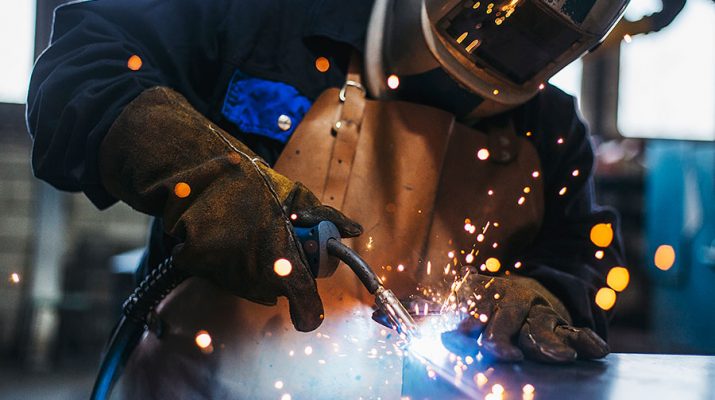You’ve moved on to the big leagues. Industrial equipment? We’ll help you with some of the most important safety tips.
Welding on industrial equipment IS the big kahuna but at a price.

The Hazards
To start with, it’s time to refresh some of the hazards and concerns mentioned in the last safety guide regarding welding:
“Welders have a high chance of facing electrocution and shock due to the voltages they frequently work with. In some cases, welding machines demand 575 volts, which is enough to cause skin burns, muscle paralysis, and death. You need to be careful when dealing with these welding arcs and machines. Grrrr.”
“The burns that occur when metal comes in contact with the arc results in the release of toxic fumes. If inhaled, you might face any variety of issues, short term like dizziness and unconscious to long-term medical concerns like lung cancer and neurological decay”.
It’s important to be very aware of these two, as sometimes they aren’t that obvious to experience first-hand.
In regards to fires and explosions, you should realize by now that your welding arc can reach 10,000 degrees Fahrenheit; the bigger concern is going to be the heat and sparks created by that arc. In industrial environments, a lot of the workaround you can be flammable, and they WILL catch on fire if the welding arc is just within the vicinity.
The Concerns
Many beginning welders are in shock of how frequent burns can occur. Yes, the welding arc is HOT, but it’s vital that you have better, more protective safety standards in general. Other injuries include cuts, bruises, exhaustion, injuries from physical exertion, coughing fits, and eye strains.

Safety Tips
Okay, so you already might remember some of the basics. It’s important, however, to refresh some of the equipment-related mentioned in previous guides. The standards at Lincoln Electric are a great reference for a refresher on this topic.
The first primary rule is to protect your eyes with the proper headgear. Typical goggles aren’t enough when you are dealing with welding arcs, and it’s essential to utilize the best welding helmets, visors, and lenses available to maintain visibility and protect yourself.
The second is simple: “WEAR HIGH-QUALITY GLOVES. As a welder, you are going to be using all kinds of hand-held tools, and some are hot! Typical high-quality gloves are laced with Kevlar, giving yourself an extra layer of support.”
Also, make sure that your clothing isn’t flammable and obstructive in your work. Now that you understand the significance of addressing your personal equipment, let’s talk about welding safety tips while working on industrial and construction equipment.
The most common welding demands will be cutting and removing failed and unnecessary parts. There’s a large room for error, so here are some solid guidelines:
1. First, remove the damaged metal. Keep in mind that some cutting methods are meant for cutting through while others are just for simple gouging.
2. Understand that although oxy-fuel torches are the most common, plasma can be faster and result in a smaller cut width. The latter is also built for conductive metals, while oxy-fuel isn’t. Carbon arc gouging, however, is there to melt away defective areas.
3. Cut or gouge in a manner that is nearly perfect for whatever you want to replace.
4. After cutting away, try to blast away the molten metal with air streams and let it cool down. It’s crucial that you know WHAT tools you are working on and how to USE them.

As a welder, you may not think you are responsible for the workaround you. But working on industrial equipment demands a greater outlook. Prioritize your workplace and colleagues’ safety. There are excellent opportunities on the internet to find second-hand equipment for affordable prices but ensure that any equipment you do buy is up to safety standards.
Now it’s Time to Begin Your Journey!
Welding was and still is a complicated process. While working on industrial equipment, it can get even more demanding; there are numerous dangers of the job, and it’s up to you to be prepared. It’s vital for you to know these safety hazards, injury concerns, and protective tips before you begin!


